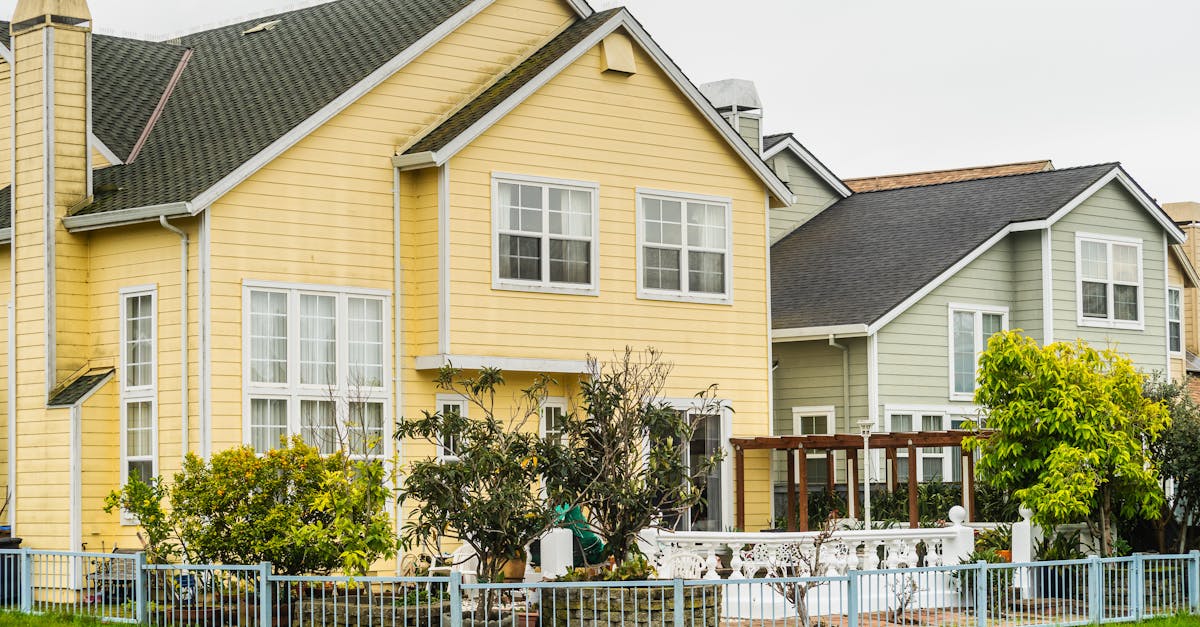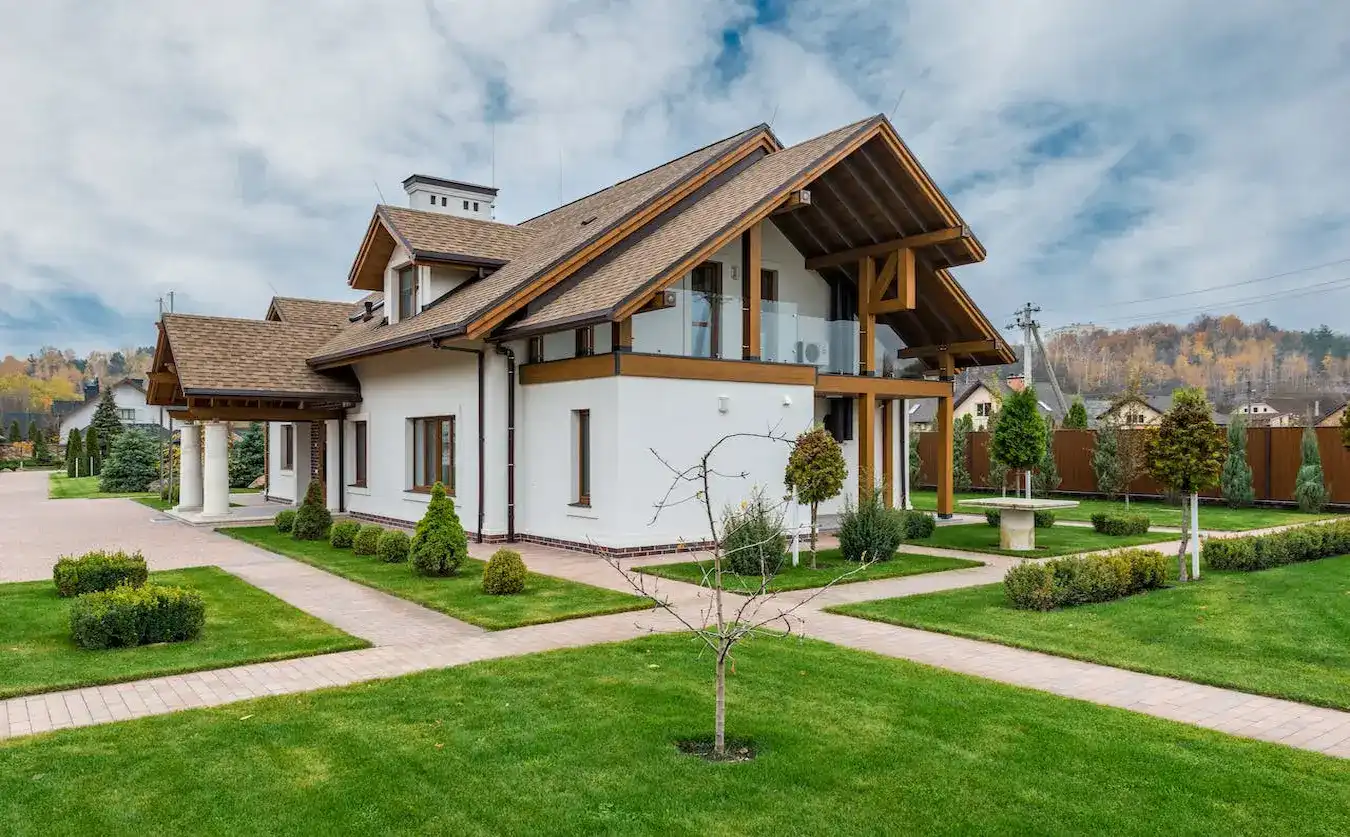Introducing Curvspace Yards
Curvspace reimagines traditional yard spaces to maximize utility and aesthetic appeal with inspirational ideas. Our focus is on inspiring new possibilities through innovative designs that blend functionality with modern aesthetics. Curvspace Yards explore technology-driven landscaping solutions, such as automatic irrigation systems with soil moisture sensors and LED lighting, to optimize water usage and enhance both beauty and functionality.
Our approach includes modular elements like adjustable seating and easy-maintenance garden beds for versatile use. We emphasize multi-purpose areas, such as outdoor kitchens and versatile play zones, to create seamless indoor-outdoor experiences. Prioritizing environmental sustainability, eco-friendly materials, and energy-efficient systems.
Reader Disclosure
Jump to:
What is a Yard?
A yard is an open area, typically found adjacent to homes or buildings. It often serves as a space for recreation, gardening, and social activities. In residential contexts, there are mainly two types of yards: front yards and backyards.
The History of Yards
Yards have roots in ancient civilizations and have evolved alongside human settlements. Assyrian, Persian, and Egyptian cultures all utilized open spaces within their homes for functional and aesthetic purposes. These early instances served as private sanctuaries and venues for social gatherings.
The Roman Empire further refined the concept of the yard. Roman villas featured “peristyles,” which were courtyards surrounded by columns, offering a balance between indoor and outdoor living. These yards became central to Roman domestic architecture.
In medieval Europe, the concept of yards adapted to the feudal system. Castles and manor houses included enclosed courtyards called “baileys.” These served as secure areas for various activities, such as markets, training grounds, and community events.
In Colonial America, yards also held significant importance. Settlers used front and back yards for essential activities like gardening and animal husbandry. They provided space for practical functions and communal interactions, contributing to the social fabric of early American communities.
The industrial revolution marked a shift in yard usage. With urbanization, yards in residential areas became smaller but more focused on leisure and aesthetics. City planners began to incorporate public yards and parks into urban designs to promote social well-being.
Today, yards continue to evolve with changing lifestyles and technological advancements. From meticulously landscaped gardens to multifunctional urban spaces, yards have retained their essential role in providing green spaces for personal use and community engagement.
Purpose of Yards
Yards serve as valuable spaces in both private and public settings. Each type of yard offers unique functions and benefits that enhance quality of life and community well-being.
Front Yards
Front yards create first impressions for homes and businesses. Well-maintained front yards improve curb appeal, boosting property values. They offer a space for light social interactions and gardening activities.
Backyards
Backyards provide a private retreat for leisure and recreation. They’re often used for family gatherings, barbecues, and gardening, contributing to mental and physical health. Backyards can also house playgrounds, pools, and other amenities.
Train Yards
Train yards play a crucial role in the transportation industry. They facilitate the organization, storage, and maintenance of freight and passenger trains. Efficient train yards ensure timely and safe transportation.
Navy Yards
Navy Yards have historical and strategic significance. They serve as bases for constructing, maintaining, and repairing naval vessels. Navy Yards also contribute to national security and economic activity.
Industrial Yards
Industrial yards are essential for businesses dealing with large quantities of materials. They provide storage space for raw materials, finished products, and equipment. Industrial yards optimize operations, improving productivity and logistics.
Curvspace Yards
Curvspace Yards represent modern innovation in yard design possibilities for In-between spaces. These smart yards incorporate sustainable landscaping, modular elements, and advanced technology. By focusing on environmental sustainability and community engagement, Curvspace Yards enhances property value by inspiring while providing versatile benefits.
Whether residential or industrial, yards offer a range of benefits—from enhancing property value and creating leisure spaces to improving productivity and security. They continue to adapt to contemporary needs, ensuring their relevance and functionality in today’s world.
Types of Yards
Front Yards
Front yards offer an inviting entry point to homes, enhancing curb appeal. Homeowners often landscape these yards with lawns, flower beds, and decorative features like fountains or statues. A well-maintained front yard significantly boosts property value.
Backyards
Backyards provide a private outdoor space for families. These yards can host gardens, patios, play areas, and pools. A thoughtfully designed backyard enhances living space, providing a retreat from daily routines.
Train Yards
Train yards handle rail traffic, facilitating cargo and passenger transfers. These industrial spaces include tracks, warehouses, and repair shops. Efficient train yards improve logistics and transportation efficiency.
Navy Yards
Navy yards serve as bases for naval operations, shipbuilding, and repairs. They include docks, drydocks, and administrative buildings. These yards play a crucial role in national security and maritime industry support.
Industrial Yards
Industrial yards store goods and materials for manufacturing and distribution. They encompass warehouses, storage facilities, and loading docks. Effective management of industrial yards boosts productivity and operational efficiency.
Curvspace Yards
Curvspace Yards integrates sustainable practices and advanced technology to inspire you to make your In-between spaces more verstile. These modern yards incorporate green building materials, renewable energy sources, and smart irrigation systems. Curvspace Yards enhance property value and promote ecological balance.
Contemporary Uses of Yards
Yards offer versatile spaces that adapt to modern needs. Homeowners and urban planners recognize the benefits of functional yards, focusing on design, sustainability, and utility.
Outdoor Living Spaces
Modern yards often function as outdoor living areas. Homeowners integrate elements like patios, decks, and outdoor kitchens to extend their living space. These additions provide spots for relaxation and entertainment, enhancing property value. For example, many people install fire pits and seating areas for social gatherings.
Urban Green Spaces
In urban environments, yards serve as vital green spaces. Planners design community gardens, rooftop terraces, and small park areas within residential yards to provide residents with access to nature. These green spaces improve air quality, reduce heat islands, and offer psychological benefits, contributing to city livability.
Gardening and Food Production
Many yards now feature vegetable gardens and fruit trees. Homeowners grow their food, promoting sustainability and reducing grocery expenses. Raised beds and vertical gardens are common, making efficient use of space in both large and small yards.
Recreational Areas
Yards serve as recreational spaces for children and adults. Homeowners often invest in playgrounds, swimming pools, and sports courts to create areas for exercise and play. These installations promote physical activity and offer convenient recreation at home.
Sustainable Practices
Contemporary yards incorporate sustainable practices. Rain gardens, composting areas, and native plant landscapes are popular. These elements conserve water, reduce waste, and support local ecosystems. Homeowners and landscapers prioritize low-maintenance, eco-friendly designs.
Technology Integration
Technology enhances the functionality of modern yards. Smart irrigation systems, outdoor lighting, and security cameras offer both convenience and safety. Homeowners use apps to control these features remotely, optimizing their yard’s usability and efficiency.
Community Engagement
Yards foster community engagement. Neighborhoods with communal yards or shared garden plots create spaces for residents to interact and collaborate. These areas strengthen social ties and build a sense of community.
Artistic Expression
Yards increasingly reflect personal style and creativity. Homeowners design landscapes that showcase unique features like sculptures, water features, and thematic plantings. These artistic touches create visually striking and personalized outdoor spaces.
This evolving use of yards accommodates contemporary lifestyles while enhancing the residential experience.

Modern Trends in Yards Design
Modern yards often feature elements that enhance both functionality and aesthetics. Homeowners integrate patios, outdoor kitchens, and fire pits to create outdoor living spaces. These additions extend the indoor environment and promote outdoor leisure activities.
Sustainable Landscaping
Many yards now include sustainable landscaping. Homeowners use native plants, rain gardens, and xeriscaping techniques to reduce water usage and maintenance efforts. Solar-powered lighting and rainwater harvesting systems also contribute to eco-friendly yard designs.
Technological Integration
Technology plays a significant role in modern yard design. Smart irrigation systems ensure efficient water usage by adjusting based on weather conditions. Outdoor speakers and Wi-Fi-enabled lights enhance the outdoor entertainment experience.
Multipurpose Spaces
Yards now serve multiple purposes. Gardens for growing vegetables and herbs have become popular, promoting urban agriculture and food security. Some yards also include play areas for children, exercise spaces like yoga zones, and areas designated for pets.
Outdoor Furniture and Decor
Outdoor furniture has evolved to match indoor comfort. Weather-resistant materials like teak, wrought iron, and all-weather wicker ensure durability. Decorative elements like water features, sculptures, and pergolas can add unique touches to personalize outdoor spaces.
Community and Social Areas
People increasingly design their yards as social hubs for gatherings. Features like communal seating areas, outdoor bars, and versatile dining spaces foster social interaction. In urban settings, shared green spaces bolster community engagement.
Homeowners are transforming their yards into functional, stylish areas that meet modern needs, emphasizing sustainability, technology, and multipurpose use. The integration of these elements ensures that yards remain vital parts of living spaces, enhancing their utility and appeal.
Cultural Diversity in Yards Design
Yard design varies significantly across cultures, each reflecting distinct aesthetics, practices, and values. In Japanese culture, Zen gardens emphasize simplicity, balance, and natural elements like rocks, sand, and minimalistic plants. These yard In-between spaces provide meditation and relaxation in a residential setting.
Mexican yards, or patios, often incorporate bright colors, intricate tile work, and lush greenery. Mexican design integrates community-focused areas for gatherings, with elements like fountains and seating to foster socializing.
In Mediterranean regions, yards feature terracotta tiles, wrought iron furniture, and vibrant flora such as lavender, olive trees, and grapes. These yards highlight outdoor living, emphasizing dining, relaxation, and gardening in warm climates.
Middle Eastern yards frequently include shaded areas, water features, and lush plantings. Courtyards provide privacy and a cool retreat from the hot climate, often incorporating traditional elements like mosaic tiles and intricate woodwork.
Indigenous Australian yards can include native plants like eucalyptus, kangaroo paw, and wattle. These spaces aim to harmonize with the natural environment, utilizing sustainable landscaping practices and respecting cultural heritage.
In the US, yard design often blends multiple influences, reflecting the country’s melting pot of cultures. Suburban yards might include elements from various traditions, such as Zen-inspired rock gardens or Mediterranean-style patios, creating unique and personalized outdoor spaces.
Cultural diversity in yard design not only enhances aesthetic appeal but also fosters a deeper appreciation for different traditions and practices, enriching residential living environments.
Curvspace Qualities of Yards
Curvspace yards combine aesthetics and functionality, forming unique outdoor environments. They incorporate advanced landscaping techniques to create smooth transitions, enhancing visual appeal.
Terrain Adaptability
Curvspace yards adapt to different terrains. They work well on slopes and uneven grounds by implementing retaining walls and tiered planting. This method maximizes usable space and prevents soil erosion.
Sustainable Features
Sustainability is a key trait of Curvspace yards. Native plants, rainwater harvesting systems, and permeable pavers reduce environmental impact. These features conserve water, promote biodiversity, and minimize runoff.
Recreational Spaces
Curvspace yards offer versatile recreational for In-between spaces. They can include walking paths, seating areas, and play zones, providing a multifaceted environment for social activities and relaxation.
Plant Selection
Diverse plant selection enhances yards. Using a mix of perennials, shrubs, and ornamental grasses creates dynamic and visually appealing landscapes. Color, texture, and seasonal variation contribute to the yard’s beauty.
Technological Integration
Smart technology integrates seamlessly into yards. Automated irrigation, lighting systems, and weather sensors optimize garden management, ensuring efficient and sustainable maintenance practices.
Artistic Elements
The inclusion of artistic elements adds character to Curvspace yards. Sculptures, water features, and customized stonework enhance the aesthetic value and personalize the space, reflecting individual tastes and creativity.
Focus on these qualities of Curvspace can make your yard that blends sustainability, functionality, and beauty.
People Also Ask
What is the historical significance of yards?
Yards have historically played pivotal roles in property value, transportation, productivity, and community engagement. For instance, front yards act as welcoming spaces, while backyards offer private retreats. Train yards and Navy Yards have been crucial for logistics and defense, respectively.
How have modern yards evolved?
Modern yards now include features like patios, green spaces, and smart technology. These additions enhance urban livability and promote sustainable practices, making yards more functional and enjoyable for everyday life.
What makes Curvspace yards unique?
Curvspace yards stand out due huge possibilities of design for their adaptability to different terrains and inclusion of sustainable features like native plants and rainwater harvesting systems. They offer versatile recreational spaces, integrate smart technology, and often feature artistic elements, creating personalized and enriching outdoor environments.
What sustainable practices are common in Curvspace yards?
Curvspace yards offer inspirational ideas often including native plants, rainwater harvesting systems, and energy-efficient lighting. These elements help conserve resources and promote a more sustainable living environment, contributing to overall ecological balance.
How do Curvspace yards enhance property value?
By blending sustainability, functionality, and beauty, Curvspace yards boosts property value. Their versatile and aesthetically pleasing design ideas can attract potential buyers and reflect a commitment to modern, eco-friendly living.
Can technology be integrated into Curvspace yards?
Yes, Curvspace yards often inspire to feature smart systems for irrigation, lighting, and security. These technological integrations enhance convenience, efficiency, and the overall enjoyment of outdoor spaces.
What artistic elements are common in Curvspace yards?
Curvspace yards frequently incorporate sculptures, water features, and custom landscape designs for In-between spaces. These elements add aesthetic appeal and reflect the individual tastes and creativity of homeowners, making the yard a personalized outdoor retreat.
Conclusion
Exploring the diverse types of yards reveals their significant roles, from enhancing property value to fostering community engagement. Modern advancements like smart technology and sustainable practices have transformed these In-between spaces, making them more functional and aesthetically pleasing. Curvspace Yards exemplifies adaptability and innovation, blending sustainability with innovative inspirational ideas to enhance beauty to create unique outdoor environments. By embracing these evolving yard designs, we can enhance our living spaces and contribute to a more sustainable future.
Show & Tell
We’d love to hear your thoughts about these ideas! Simply click the link to head over to your favorite platform and add your comments about this post there. We’d like to know about your insights, questions, or just saying hi.
More Curvspace Topic Pages
Disclosure
Our content is reader-supported. This means if you click on some of our links, then we may earn a commission. Commissions do not affect our editor’s opinions or evaluations.
Learn more about our editorial process.

About the Editorial Staff
The Curvspace editorial team comprises a diverse group of experts on intermediate and threshold spaces in homes and workplaces. Architects and interior designers, civil engineers and artists, environmental and behavioral psychologists, sociologists and anthropologists. All collaborate to create helpful content, that explores the full potential of these often-overlooked areas to enhance our daily lives.


